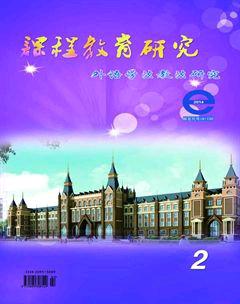A Study of the Learning-plan Model of Teaching
孫建
【Abstract】 This paper attempts to make a study of a newly-emerging teaching method in the field of rudimentary education, viz. the Learning-plan Model of Teaching (LMT), with a view to justify that LMT is a scientific and effective teaching method, which, therefore, should be accepted and generalized in the field of rudimentary education as a model of quality-oriented education.
【Key words】 LMT, rudimentary education, quality-oriented education
【中圖分類號】H109.2 【文獻標(biāo)識碼】A 【文章編號】2095-3089(2014)02-0044-02
1. Introduction
The Learning-plan Model of Teaching (LMT) among others is a rising teaching method in the field of elementary education at present. In this model, learning plans are adopted as the carriers of knowledge, students the centre of the process and teachers have to be somewhere in the classroom but the platform thus providing that to students who on which can show themselves freely, which could be regarded as a model of quality-oriented education.
2. Literature Review
LMT dates back to 1990s when No.1 Middle School in Jinhua, Zhejiang first came up with the concept of “l(fā)earning plan” in contrast to “teaching plan” and incorporated the concept into the practice of teaching, provoking an awful reverberation in the field of education across the country. Numerous experts and scholars since then have been focusing their attention on LMT. Among them are Prof. Jia (2004) who holds that LMT is a potential and promising teaching method and Li Zhihou (2009) who deems that it creates a positive ecological environment where information could be transferred effectively into knowledge.
3. Methodology
3.1 Participants
Participants in the survey are three groups of students from Taozhou Middle School in Jiangsu Province where the author once worked and which has implemented LMT within the whole school since 2008. The first group is composed of 50 students randomly chosen from Grade 1, the second group likewise of 50 students randomly chosen from Grade 2 and the third group of 50 students randomly chosen from Grade 3.
3.2 Procedure
The three groups are called together and arranged respectively in three empty classrooms by the author and his two former colleagues and are asked to fill in the questionnaires within 15 minutes at the same time. It is necessary to tell them that this is not an examination but an investigation irrelative to their academic performance and assessment, which could help them relax and ensure their answers accuracy.
4. Discussion
4.1 The difference between the traditional teaching method and LMT
The data retrieved from questionnaires indicate the distinctions between the traditional teaching method and LMT. The first point lies in the different roles of teachers. In the former mode of teaching, teachers are seen as the center of the classroom, students just sitting still and receiving passively what the teacher instills throughout the whole process, while teachers utilizing LMT are not regarded as the center of the classroom but a kind of assisting instrument for students if necessary. The second distinction has a bearing upon the carrier of knowledge which finds itself in the textbooks in the traditional teaching method but in a piece of learning plan organized and compiled by teachers in advance in LMT. Besides, data indicate that most subjects cast their votes for LMT in the aspect of learning autonomy, with a minority of them holding that priority should be given to the traditional teaching method on account of its advocacy of students learning autonomy, which is indeed a truth in some areas. Nevertheless, autonomy in most of the traditional classes is still a luxury with teachers being in charge of the whole process of teaching and students just sitting still passively receiving what teachers imbue. In LMT, however, autonomy is endowed to students who thus could learn in accordance with their interests. Other things being equal, a student who learns autonomously will offer a better academic performance than those who cannot but learn passively. Therefore, given the advocacy of students learning autonomy, LMT undoubtedly dwarfs the traditional teaching method.
4.2 The prospect of LMT
LMT is a newly-emerging thing in the field of rudimentary education, which thus far could only be found implemented in a finite number of schools such as Xinjiang Middle School in Shanxi, Yangsi Middle School in Jiangsu and Du Langkou Middle School in Shandong, etc. In view of its great potential superiority especially in the aspect of advocating students learning autonomy, a bold personal prediction can be made here that probably it will be adopted and generalized at large as one of the ideals of quality-oriented education in the near future.
5. Conclusion
This paper makes an attempt to probe into the differences between the traditional teaching method and LMT as well as the prospect of LMT, whereas a detailed depiction of the process of an intact learning-plan class is not provided, which is the point the future researches might concern.
References:
[1]賈如鵬,傅海倫. “學(xué)案”教學(xué)模式探討[J]. 教育科學(xué)研究, 2004,(07):35-36
[2]李志厚,馬麗. 學(xué)案式教學(xué)的知識生態(tài)學(xué)分析[J]. 當(dāng)代教育與文化, 2009, (03):81-85

